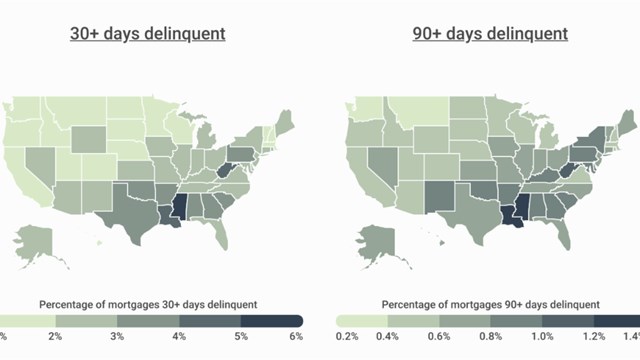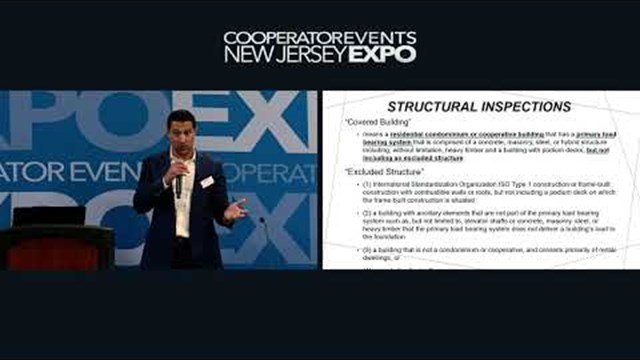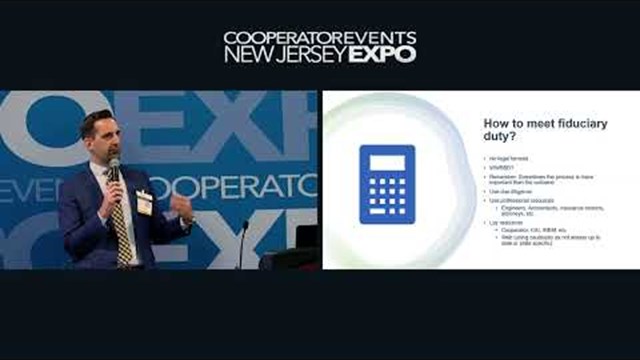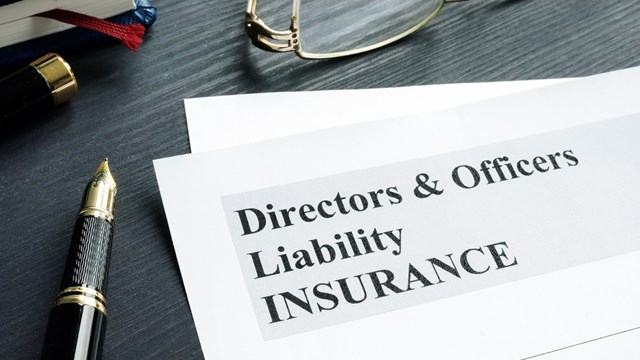With few exceptions, most multifamily buildings or communities have at least one or two staff members (and sometimes many more) who maintain the safety, security, cleanliness, mechanical operations, and day-to-day functions that residents and visitors rely on—and as the coronavirus pandemic has gripped the country, the importance of the hard work those frontline employees do every day has become even clearer. With the average, non-medical-professional condo or HOA resident now something of an expert on disinfectant and personal protective equipment, it’s also instructive to know what agencies and organizations work to ensure the safety and security of the staff themselves. What systems and protocols are in place to address how employees can keep themselves—and each other—safe on the job? The New Jersey Cooperator went behind some familiar acronyms to find out.
OSHA
Workplaces throughout the United States and its territories are subject to oversight by the Occupational Safety and Health Administration (OSHA), which is itself overseen by the U.S. Department of Labor. According to the OSHA website (osha.gov), “OSHA creates and enforces regulatory standards that require certain precautions to be taken in order to ensure the safety and health of workers.”
OSHA regulations are the primary worker safety statutes in the U.S., says Matthew Persanis, a partner with Elefante & Persanis, LLP, a labor, employment, and real estate law firm in Scarsdale, New York who is also labor counsel to a number of employer associations. “If a building complies with OSHA regulations, they are complying with what they need to.”
Part of keeping building and HOA employees safe is making sure they’re properly trained for the tasks expected of them. According to an OSHA spokesperson, “Property staff must have training appropriate for the types of jobs and tasks they are performing. If they work on electrical equipment, they need to be qualified. If they work with chemicals, they need to be trained in the safe use of those chemicals. If they are performing servicing and maintenance on equipment, it is possible they will need training in the control of hazardous energy. It is their employer’s responsibility to ensure the workers are trained on the hazards to which they are exposed. OSHA offers free, confidential onsite safety and health consultation services.”
It is the responsibility of the employer to ensure that OSHA standards are followed and maintained; it is the responsibility of the employee to call out serious hazards and to inform OSHA when they believe an employer is not compliant. OSHA compliance officers perform drop-in inspections only when there is an imminent or obvious hazard, an injury or fatality, or if a worker or worker representative files a complaint.
“OSHA’s role is to enforce the rules that apply to any work being performed on-site,” says Kate Ferranti of SEIU Local 32BJ, the Service Employees International Union, which represents building workers throughout the Mid-Atlantic. “They can inspect a condo if there is a history of accidents there, or if an employee files a complaint regarding lack of training or if a hazardous condition exists.”
32BJ
According to James Barry, Senior Manager of Program Development for the 32BJ Training Fund, the union has more than 175,000 members, making it the largest property workers’ union in the United States. The New York metropolitan area accounts for 80,000 of those members; add in New Jersey, Connecticut, Pennsylvania, Maryland, Virginia, and Washington, D.C., and the number swells to more than 100,000. Union members include cleaners, doormen, porters, maintenance workers, window cleaners, security guards, superintendents, and theater and stadium workers.
In addition to the healthcare benefits, retirement planning, wage negotiations, and collective advocacy that the union provides its members, 32BJ offers more than 200 educational courses and certifications through its jointly administered multiemployer Training Fund—many of which have a strong safety-related component. To be qualified as a window cleaner, for example, a candidate must pass a series of training courses certifying them to carry out different aspects of the job, such as suspended scaffold safety and rope skills.
Robert Sparer, partner at the labor and employment law firm Clifton Budd & DeMaria, LLP in New York City, explains that “Safety is something that is such a tremendously important factor in any operation that the unions will be involved in it to a great deal.” Ferranti agrees, adding that “All staff members and property managers can benefit from health and safety training to avoid accidents, and any such training plans are determined by the individual residential buildings. If the employees are participants in the 32BJ Training Fund, there are classes that include significant content on training, including Industrial Training.”
32BJ courses are offered free of charge at various locations throughout the jurisdictions of its membership, as well as online. The Training Fund will even set up remote locations for training if the circumstances warrant it. For example, Sparer cites a large employer that devoted an entire floor of one of their buildings to erect a mock-up of a boiler to serve as part of their employee use and safety training on boiler operations. Full-length courses run for 11 weeks and are offered quarterly. Some of the most popular in the New York metropolitan area include Fire Safety for Residential Buildings, CPR/AED, Air Pollution Control, and Electricity Basics.
With the arrival of COVID-19 to the tri-state area this past spring, 32BJ launched a resource bank on its website, www.seiu32bj.org covering everything from prevention measures for employers and individual workers to the legal ramifications of the situation for essential frontline workers, including those in building and association operations.
RAB
The Realty Advisory Board on Labor Relations (RAB) is a multiemployer association serving the real estate industry in Northern New Jersey, New York City, Long Island, Westchester, and Connecticut. RAB negotiates on behalf of property owners and operators in collective bargaining agreements with the unions that represent their maintenance and operating employees. They also advise and represent members in matters involving personnel and human resource administration.
Usually RAB is involved in establishing safety committees for smaller unions via their collective bargaining agreements. The association will also advise unions and employers about new or updated safety regulations or practices and how they should be rolled out. Depending on the update, this information might also come through a dedicated OSHA consultant, or through the managing agent/employer themselves, who will advise on the best training methods based on their staff structure and the nature of the topic—whether that be more meetings, formal training sessions, a pamphlet, or on-site instruction.
IRL
Of course, even with all these organizations, regulations, and protections, in real life (IRL) accidents do still happen. Sparer says that employees do sometimes compromise their own safety by cutting corners when they want to do something quickly—standing on a nearby chair when getting an appropriate ladder would be the proper way to reach something high up, for example—but at the end of the day, when a building violates a labor or safety law covering their employees, the owner is liable.
“The owner is responsible, whether it is a cooperative, condominium, or rental,” says Persanis. “The owner is ultimately responsible for what goes on at the building. Consequences are usually fines.”
“If [an injury happens] on the job, if the employer has been grossly negligent, there could be exposure to litigation and things along those lines,” says Sparer. “If there’s an OSHA violation in connection with it, even if the employer was trying to be consistent, there could be penalties there.” But Sparer also acknowledges that “Employers are very sensitive to the issue [of safety] for a variety of reasons—not least of which is avoiding injury for their employees.”
In the case of a clear-cut violation, staff should first notify the building’s managing agent of the situation, and let them take it from there. “All violations of any kind should be first brought up to the managing agent so that they may be rectified as quickly as possible,” says Persanis. “If that doesn’t work, then the employees may contact their union representative. For violations of labor law and unfair labor practices, the employees may contact their union or the National Labor Relations Board. Administrative grievances can be directed to the Department of Labor or OSHA for health violations.”
But of course, avoiding unsafe conditions—and the injuries they may cause—in the first place is far preferable to taking chances with employee safety and hoping for the best. According to Jay L. Hack, a partner at Manhattan-based law firm Gallet Dreyer & Berkey, LLP, conducting a formal risk assessment can help guide your board or management. “I strongly recommend that you conduct a risk assessment of your buildings, determine what risks exist, decide whether there are methods available to reduce those risks, and then take appropriate steps to implement those methods when it is reasonable to do so under the circumstances.”
The Final Word
While there may be a lot of abbreviations involved in the training and ongoing safety protocols for building staff, what should never be abbreviated are the actual precautions and information that are in place to ensure their safety. Proper education, implementation, and compliance—for both employees and their employers—are the cornerstones of a safe and injury-free working environment for the doormen, porters, handymen, security personnel, maintenance workers, elevator operators, and managers who service and support New Jersey’s many condo buildings and HOAs. Take advantage of the training, advocacy, and support that are available through a variety of organizations and always keep in mind that it’s better to be safe than sorry.
Darcey Gerstein is Associate Editor and a Staff Writer for The New Jersey Cooperator.










Leave a Comment